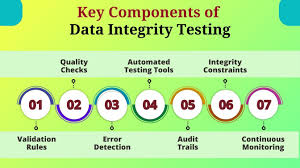The payment integrity (PI) industry plays a critical role in US healthcare, ensuring that claims adjudication is accurate and that physicians and health systems are reimbursed correctly for care delivery. We estimate the $9 billion industry has grown at a 7 percent CAGR in recent years, reflecting growth in US healthcare spending and persistent complexity in billing processes.
This growth has coincided with technological change, such as the rise of generative AI (gen AI), and payment model innovation, including the transition of about 60 percent of total care delivery reimbursement to value-based care (VBC) payments1—shifts that have the potential to transform the PI industry. This article discusses these trends and the implications for payers, care delivery organizations, PI companies, and investors.
What is payment integrity?
The PI value chain includes a series of capabilities that span the healthcare financial-transactions ecosystem.2 These capabilities are typically grouped into two main categories: prepayment capabilities, which seek to proactively identify and correct billing or adjudication errors before a health plan disburses payment to a care delivery organization, and postpayment capabilities, which identify and resolve historical payment errors after disbursement of initial payment to the care delivery organization.
This value chain includes a mix of software and analytics solutions, which typically identify and resolve relatively simple errors, and teams of coding experts and clinicians, who review claims and medical records in more complex cases. Services are provided through a combination of internal health-plan functions and an ecosystem of specialist PI companies that augment payers’ internal capabilities.
The goal of PI programs is to ensure accurate claims adjudication and payment, taking into account factors such as payment responsibility, including identifying potential errors related to eligibility, benefits coordination, and similar considerations; billing accuracy, including identifying potential coding errors and mistakes; and cases of fraud, waste, and abuse. They also look to ensure that claims are paid in accordance with the contract between a health plan and care delivery organization—that is, that each service is paid at the contractually indicated price.
Payment integrity is critical given the complexity of the US healthcare payments workflow, which results in a natural rate of error even in cases where all stakeholders strive to submit and pay claims accurately and in good faith (see sidebar, “Complexities of US healthcare payments”). Payers typically strive to identify cases of overpayment, and care delivery organizations (via a revenue cycle function typically called revenue integrity) often seek to identify cases of underpayment. This system of checks and balances helps ensure accurate payments in US healthcare.
Trends shaping the future of payment integrity
The PI industry is poised for transformation in the coming years. Contributing factors include growth in US healthcare spending, which we estimate will grow roughly 2.5 percent faster than GDP from 2022 to 2027, increasing the addressable market for PI companies and attracting continued investment.
Persistent complexity in billing and claims processing is another factor. For example, the COVID-19 pandemic accelerated a shift in care to alternate settings, such as home and virtual care.The subsequent emergence of new care delivery models (for example, hospital at home) and increase in the use of virtual-care have made it necessary for payers, health systems, and policy makers to design new billing and reimbursement guidelines, which have created new sources of potential claims errors.
Market dynamics in the PI services ecosystem are also shaping the future of PI: consolidation has resulted in the formation of organizations with the scale and specialization to harness new tools, such as gen AI. And more recently, a new wave of PI start-ups has been launched, with the incentive to disrupt the industry by launching innovative, AI-powered solutions.
But two trends stand out as having particularly complex repercussions for the PI industry. Technological innovation, such as gen AI, could result in the launch of PI solutions that are more accurate and efficient than ever before. And increasing adoption of VBC creates new sources of reimbursement complexity, both for payers and care delivery organizations. Below, we explore the relevance of these trends for PI in further detail.
AI and innovation in payment integrity
Analytical AI, machine learning (ML), and gen AI have the potential to transform many industries, including healthcare. The effects could be particularly profound in payment integrity because PI capabilities depend on the rapid review and synthesis of a variety of data sources. Furthermore, even relatively small increases in accuracy and efficiency of claims adjudication can represent substantial financial impact for a range of healthcare stakeholders because of the complexity and scale of the US healthcare payments ecosystem.
Analytical and gen AI could augment existing capabilities across the PI value chain. For example, during the review or audit of complex claims, gen AI could review and synthesize a complex combination of structured and unstructured data—including encounter data, medical record details, and health plan reimbursement policies—and support the human reviewer in making decisions, improving the accuracy and efficiency of the review process.
As we have previously described, it will take time for healthcare organizations to fully understand and harness the potential of new AI and ML capabilities. But a few potential effects of the PI technology seem probable. First, AI and ML could substantially increase claims accuracy and administrative efficiency of PI programs, creating potential shifts in value pools. For example, predictive analytics could further shift value from postpay PI programs to prepay claims edits. In addition, early adopters may have an opportunity to create a strategic distance between themselves and competitors and meaningfully improve PI programs’ ROI (for payers) and internal profitability (for PI services companies). Finally, PI services companies could transform portions of the PI value chain, launching innovative new solutions made possible by AI and ML—such as accelerated, lower-cost, and more-accurate reviews or audits for complex claims.
VBC and the future of payment integrity
Similarly, growth in VBC adoption creates new incentives for innovation in PI. Broadly defined, the shift to VBC entails tying care delivery organization reimbursement to health outcomes or value for patients. Adoption of VBC has increased markedly in recent years: the Health Care Payment Learning & Action Network (HCPLAN) estimates that VBC adoption nearly doubled from 2015 to 2021. As of 2021, almost 60 percent of healthcare reimbursement has some tie to quality or value, ranging from pay-for-performance models to fully capitated reimbursement models.
This shift to VBC has the potential to improve care coordination and quality for patients. It also creates complexity that can result in payment errors.







